“Earth is the cradle of humanity, but one cannot live in a cradle forever.” Perhaps the most famous quote attributed to Russian space visionary Konstantin E. Tsiolkovsky (1857-1935), he penned those words in a 1911 letter. In his 1883 book “Free Space,” he drew sketches of what he imagined a spaceship orbiting Earth might look like, including several occupants floating in weightlessness. While his work remained largely unknown outside of Russia, Tsiolkovsky inspired many future space engineers and scientists in his homeland, among them Chief Designer Sergei P. Korolev who developed many of the Soviet Union’s pioneering rockets and spacecraft and began planning for Earth orbiting space stations before his untimely death in 1966. Five years later, his successors placed the world’s first experimental space station named Salyut into orbit. That first module formed the basis of later Soviet and Russian space stations as well as Russian elements of the International Space Station.
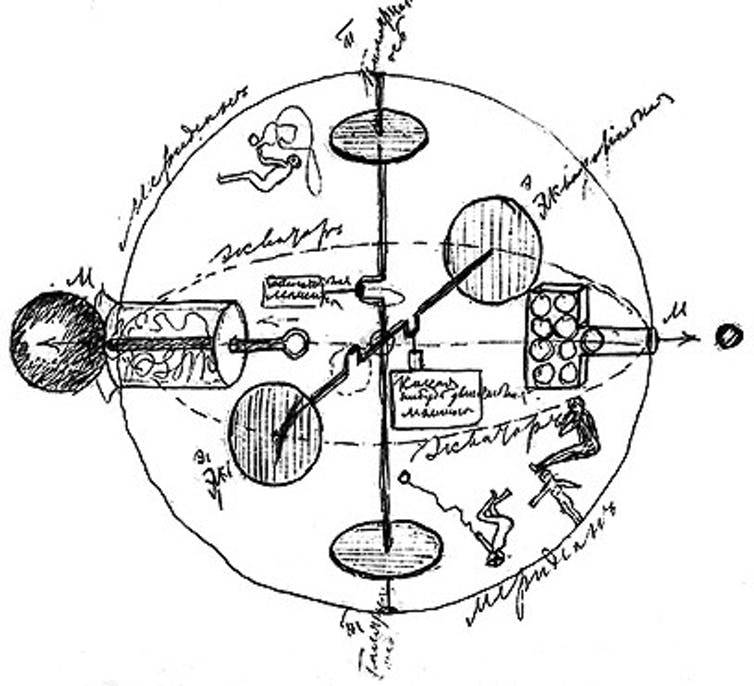
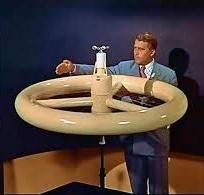
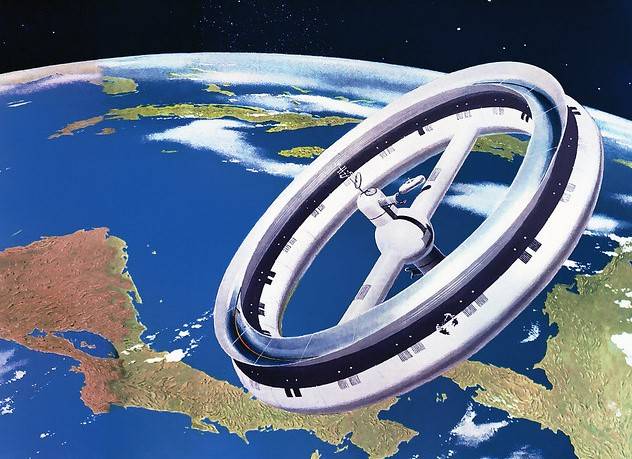
Left: Sketch by Tsiolkovsky of a spaceship in space (1883). Middle: Von Braun demonstrating a model of
his wheel-shaped space station (1956). Right: Illustration by space artist Chesley Bonestell of a von Braun type space
station orbiting the Earth (1952).
Credits: thelivingmoon.com.
As early as the 1950s, American space pioneer Wernher von Braun already had ideas for large orbiting space stations. He envisioned a wheel-shaped facility, slowly rotating to provide artificial gravity to its several thousand occupants. While such an orbital outpost exceeded available technologies for the foreseeable future, shortly after its founding in 1958 NASA began considering more modest space stations. With President John F. Kennedy’s 1961 pronouncement of a Moon landing as a national goal, plans for space stations took a back seat until after NASA achieved that objective. The Space Task Group (STG) that President Richard M. Nixon commissioned in 1969 to assess post-Apollo space objectives proposed an Earth-orbiting space station for the mid-1970s followed later by a much larger space base among several other projects. Economic realities of the time precluded such ambitious plans; President Nixon approved the Space Shuttle in 1972, the only STG-recommended project to receive funding. Approval of an American space station awaited a later president. In the meantime, the highly-successful experimental space station Skylab flew in 1973-4 using leftover Apollo hardware.
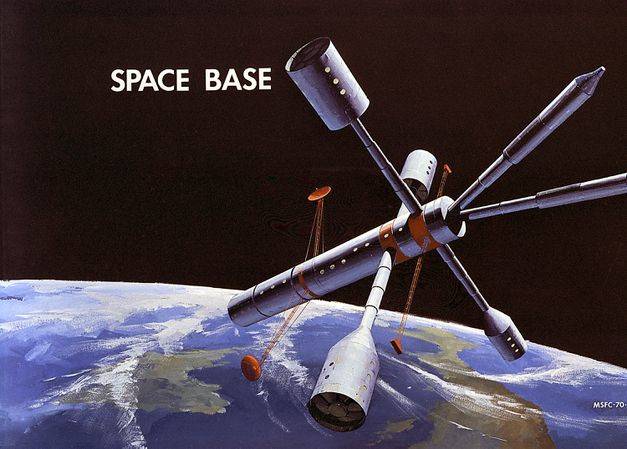
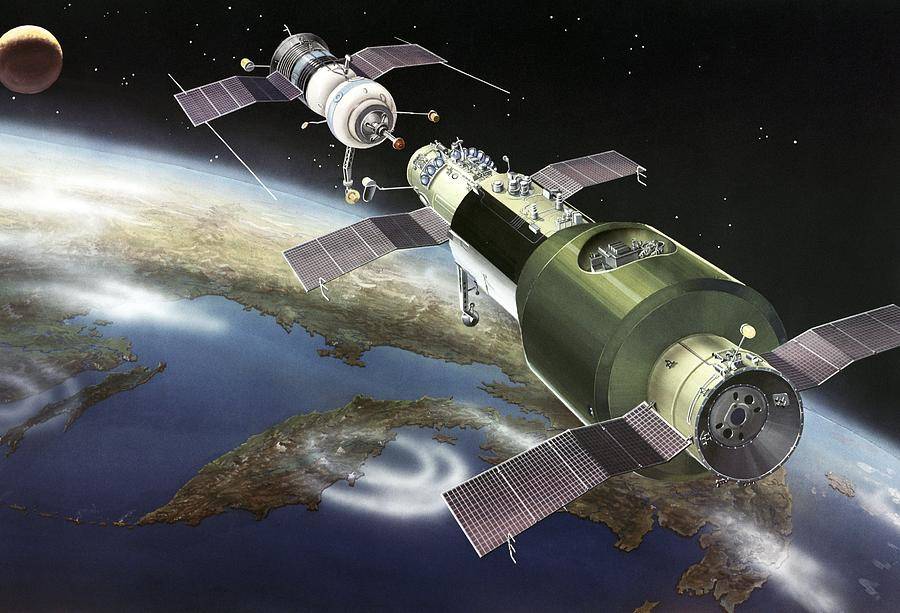
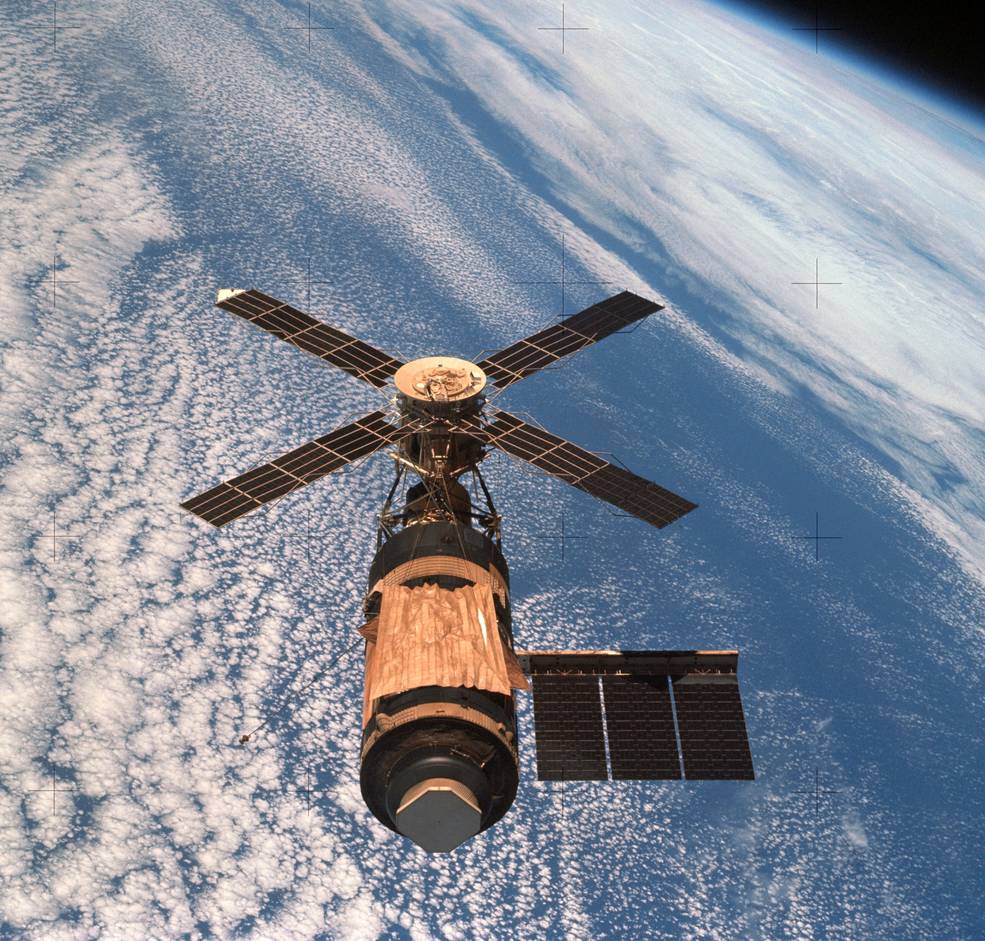
Left: Illustration of one concept of a space base as proposed by the STG (1969). Middle: Illustration of a Soyuz
spacecraft approaching the Salyut space station (1971). Right: Photograph of the Skylab space station
taken by the third crew after its departure (1974).
Credits: RIA-Novosti.
During his Jan. 25, 1984, State of the Union address to Congress, President Ronald W. Reagan directed NASA to develop a “permanently manned space station and to do it within a decade.” His comments reflected his view of American pre-eminence in space but explicitly stated that the United States would invite other nations to join in the project and spelled out the benefits to be derived from such an orbiting platform:
Our progress in space—taking giant steps for all mankind—is a tribute to American teamwork and excellence. Our finest minds in government, industry, and academia have all pulled together. And we can be proud to say: We are first; we are the best; and we are so because we’re free. America has always been greatest when we dared to be great. We can reach for greatness again. We can follow our dreams to distant stars, living and working in space for peaceful, economic, and scientific gain. … A space station will permit quantum leaps in our research in science, communications, in metals, and in lifesaving medicines which could be manufactured only in space. We want our friends to help us meet these challenges and share in their benefits. NASA will invite other countries to participate so we can strengthen peace, build prosperity, and expand freedom for all who share our goals.
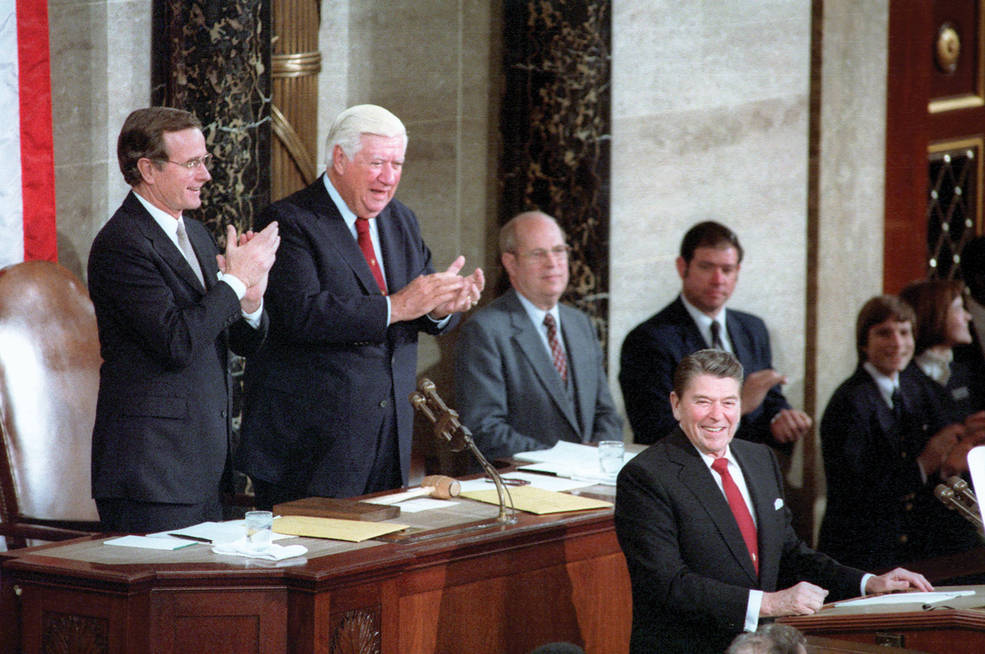
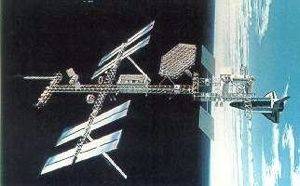
Left: President Reagan during his 1984 State of the Union address to Congress.
Right: Space Station Power Tower reference configuration (1984).
In the optimism following President Reagan’s announcement, NASA laid out an ambitious plan for a Space Station composed of three separate orbital platforms to conduct microgravity research, Earth and celestial observations, and to serve as a transportation and servicing node for space vehicles and satellites and as a staging base for deep-space exploration. NASA signed agreements with the European Space Agency (ESA) and Japan’s National Space Development Agency (NASDA) to provide their own research modules. In April 1985, NASA established a Space Station Program Office at the Johnson Space Center in Houston. Assessments of the original “Dual Keel” design determined that it was overly complex to build and cost estimates for the ambitious space station continued to rise. Over the next several years, engineers and managers redesigned the facility and simplified it to a single-truss configuration with the pressurized modules clustered near the core and the solar arrays for power generation at the ends of the truss. In July 1988, President Reagan announced that the orbital facility would be called Space Station Freedom, and two months later the Unites States, Japan, Canada and nine ESA member states signed an Inter-Governmental Agreement (IGA) for its construction and utilization. The redesigned facility would focus on microgravity research.
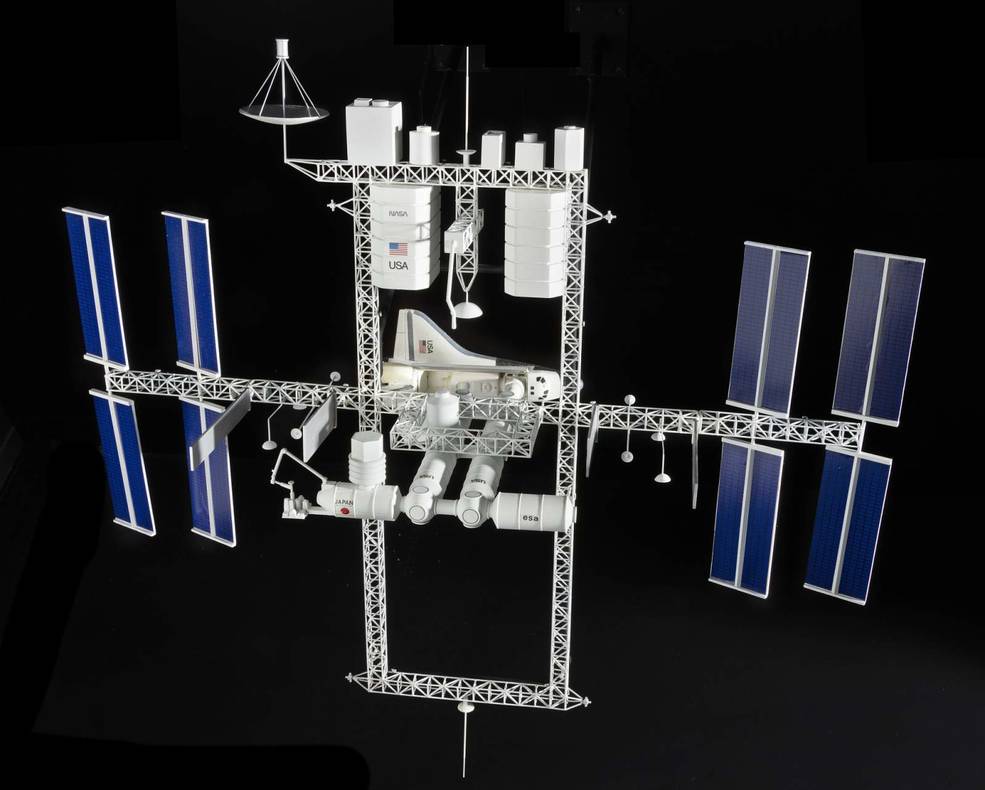
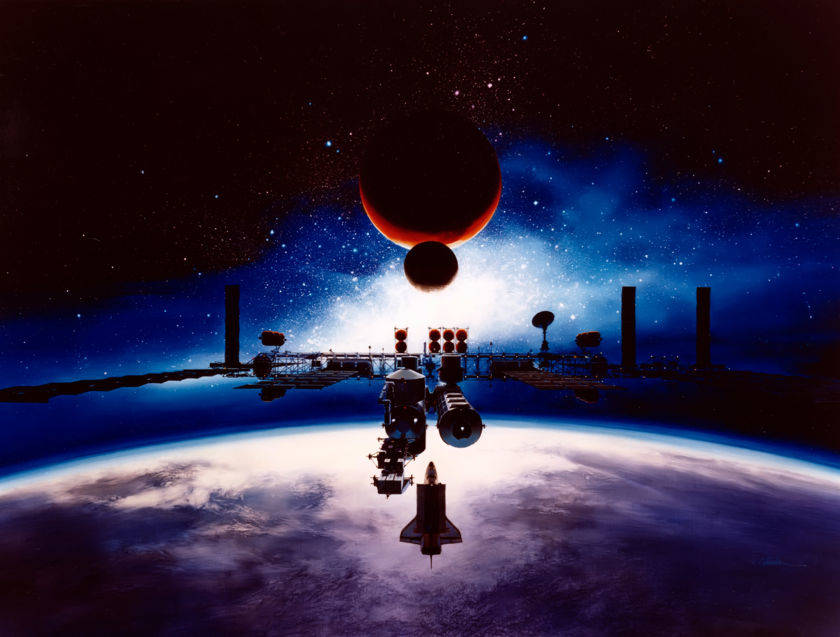
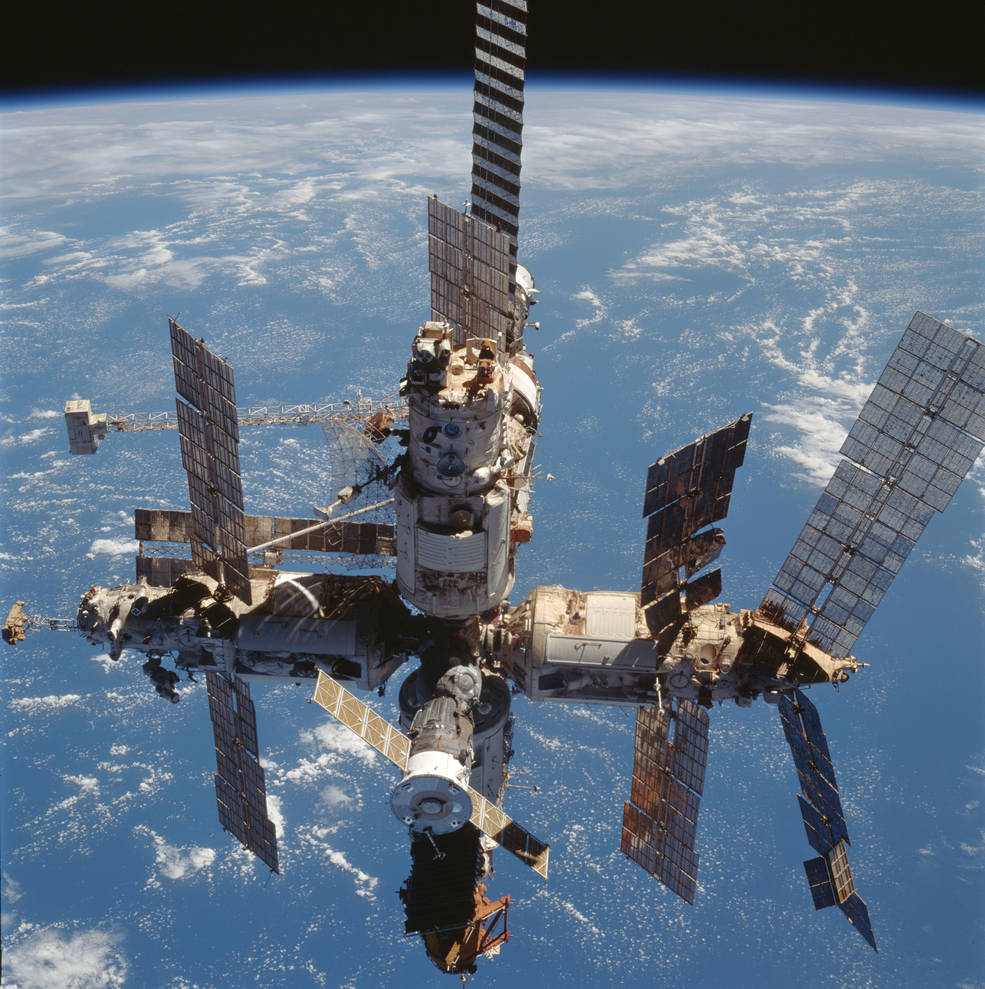
Left: Model of the Space Station showing the proposed dual keel configuration (1985). Middle: Illustration of Space
Station Freedom by Alan Chinchar (1991). Right: Russian space station Mir photographed from Space Shuttle Discovery during
the STS-91 mission (1998).
Space Station Freedom underwent several more redesigns to keep it cost-effective. In the meantime, the Soviet Union operated its Mir space station beginning with the launch of its first module in 1986. This new space station traced its heritage back to the first space station Salyut in 1971, with the Soviets making incremental improvements with ever more capable Salyut space stations in the 1970s and early 1980s. Mir was the first truly modular space station, with several elements added over the years to increase the facility’s research and habitation capabilities. With the collapse of the Soviet Union in 1991, the future of Mir and its planned Mir-2 successor faced uncertainty in the new cash-strapped Russia. To take advantage of its extensive experience with operating space stations and keeping crews on orbit for up to a year, in 1993 President William J. “Bill” Clinton invited Russia to join the program as a full partner, essentially adding modules planned for Mir-2 to US, European, Japanese, and Canadian elements from Space Station Freedom. The new outpost would be called International Space Station (ISS). In preparation for ISS operations, between 1995 and 1998 seven US astronauts joined Russian cosmonauts as long-duration residents aboard Mir, with Space Shuttles providing transportation and resupply logistics.
On Jan. 29, 1998, representatives from the United States, Russia, Japan, Canada and participating ESA countries (Belgium, Denmark, France, Germany, Italy, The Netherlands, Norway, Spain, Sweden, Switzerland, and The United Kingdom) met at the US State Department in Washington, DC, and signed an updated IGA on Space Station Cooperation. The modifications to the 1988 agreement were made necessary largely by the decision to include Russia in the partnership. The new IGA established the overall cooperative framework for the design, development, operation and utilization of ISS and addressed several legal topics, including civil and criminal jurisdiction, intellectual property and the operational responsibilities of the participating partners.
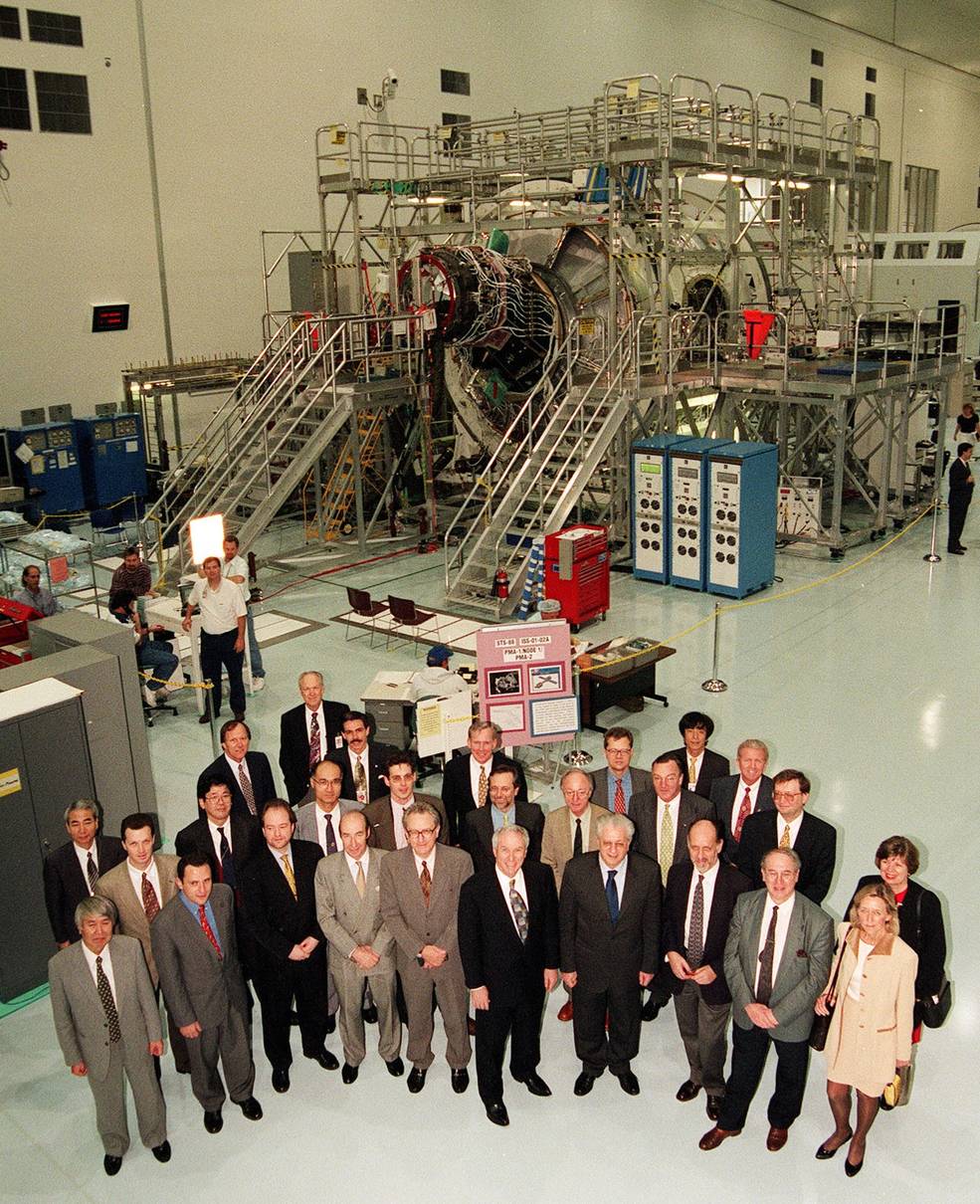
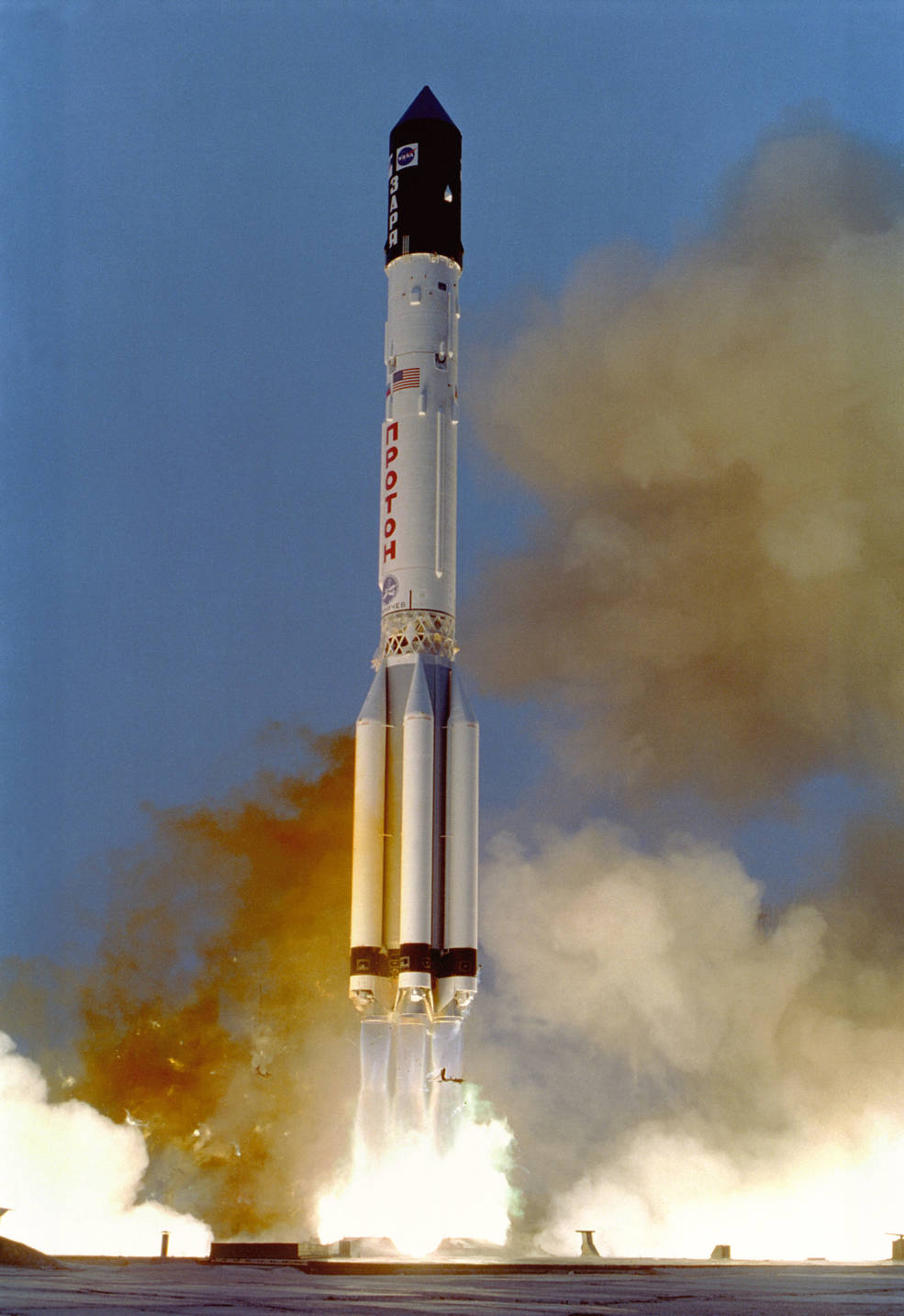
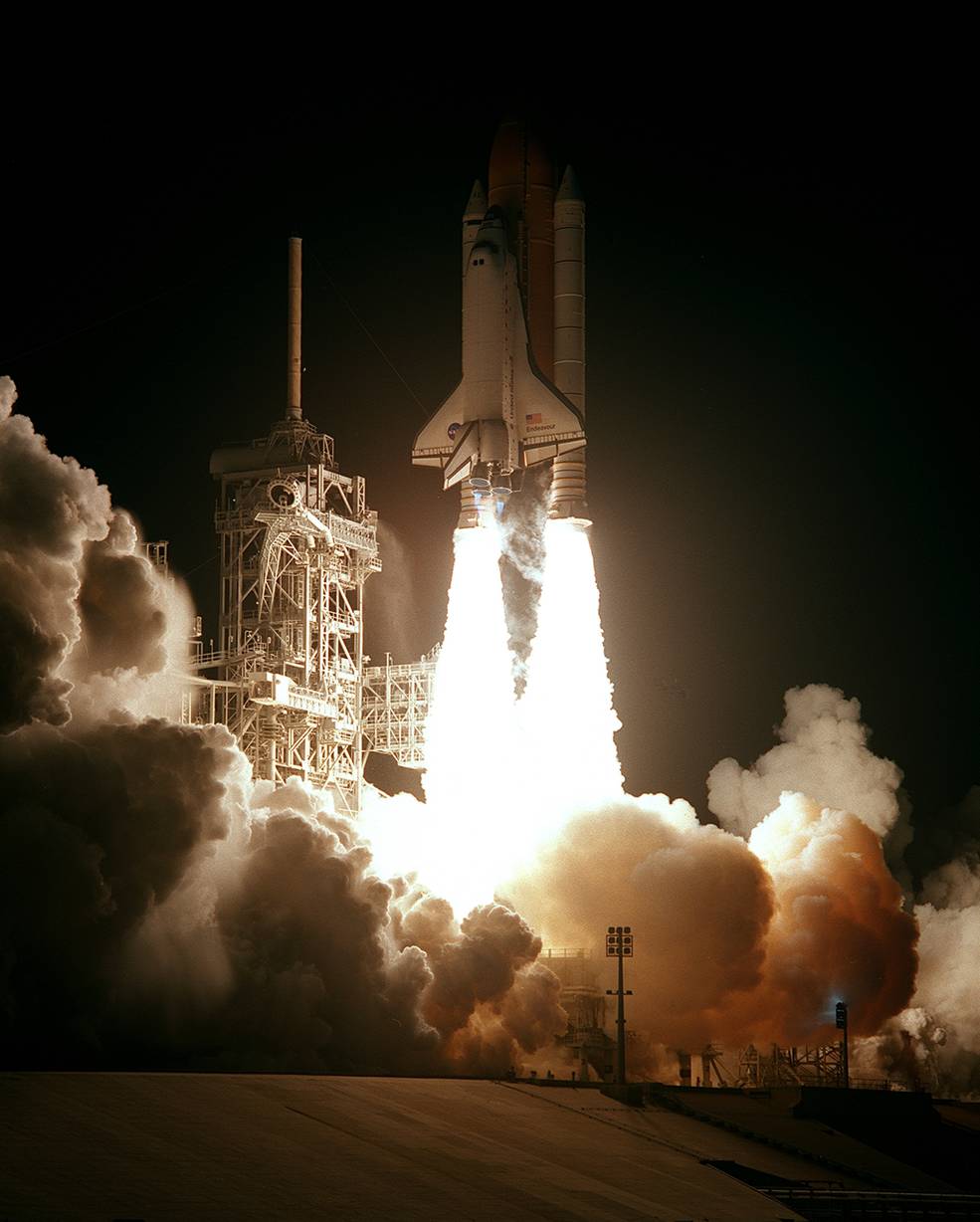
Left: Signatories of the 1998 IGA visit Kennedy Space Center’s Space Station Processing Facility, posing
in front of the Unity Node 1 module being prepared for launch. Middle: Launch of Zarya, the first
ISS on-orbit element. Launch of Space Shuttle Endeavour carrying the Unity module into orbit.
Ten months after the signing of the 1998 IGA, the Russians launched the Zarya module, the first element of the ISS on-orbit segment, from the Baikonur Cosmodrome in Kazakhstan. The first American element, the Unity Node 1 module, arrived via Space Shuttle Endeavour three weeks later, beginning the construction of the largest international space platform. The Zvezda Service Module followed in July 2000, providing living quarters for crewmembers. On Oct. 31, 2000, Expedition 1 Commander William M. “Shep” Shepherd, Flight Engineer and Soyuz Commander Yuri P. Gidzenko, and Flight Engineer Sergei K. Krikalev took off from Baikonur aboard a Soyuz spacecraft to dock with ISS two days later, the first crew to occupy the orbital facility. Nearly 20 years later, multinational crews continue to live and work aboard a much-enlarged ISS, a unique microgravity laboratory for conducting research in a wide variety of scientific disciplines and a testbed for future human exploration programs.
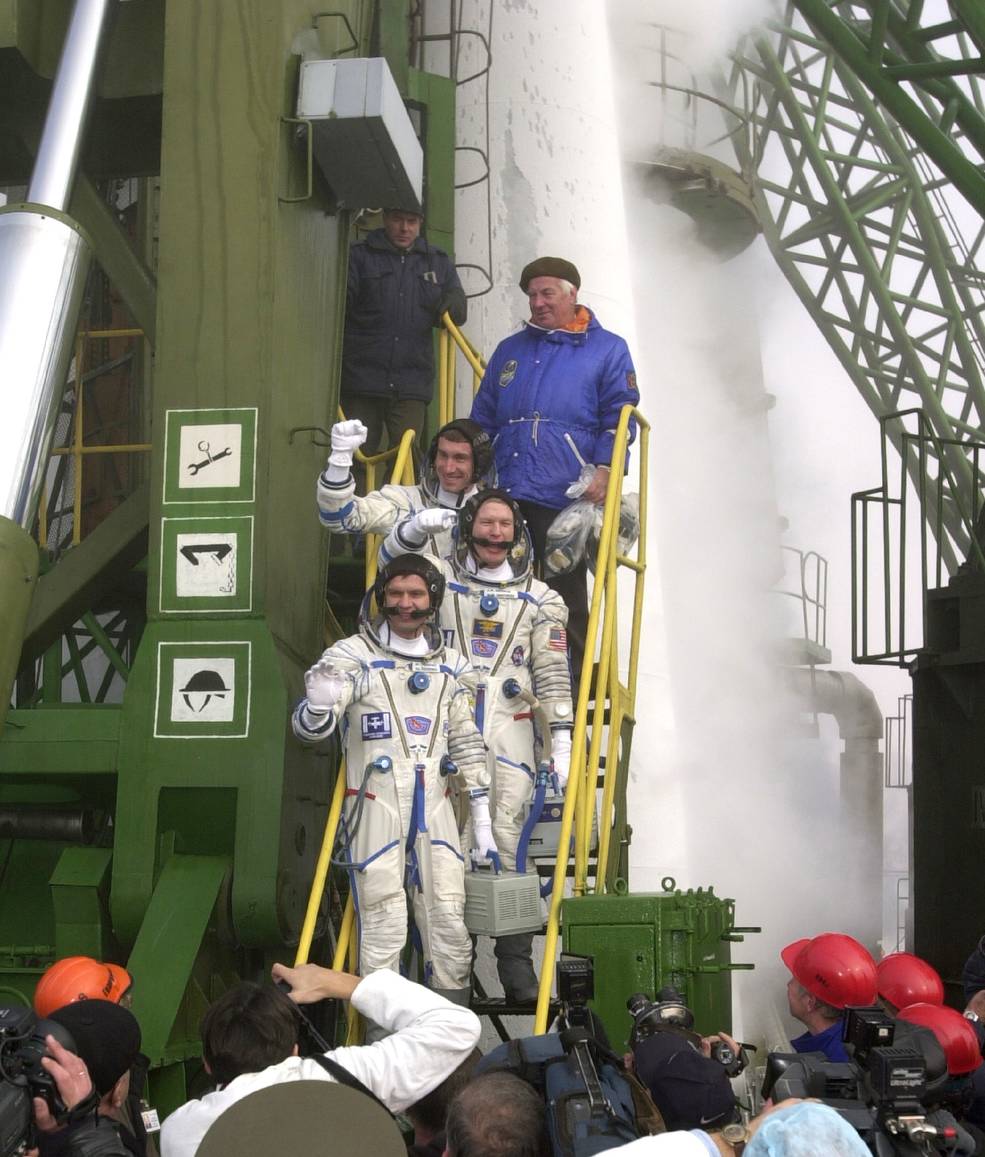
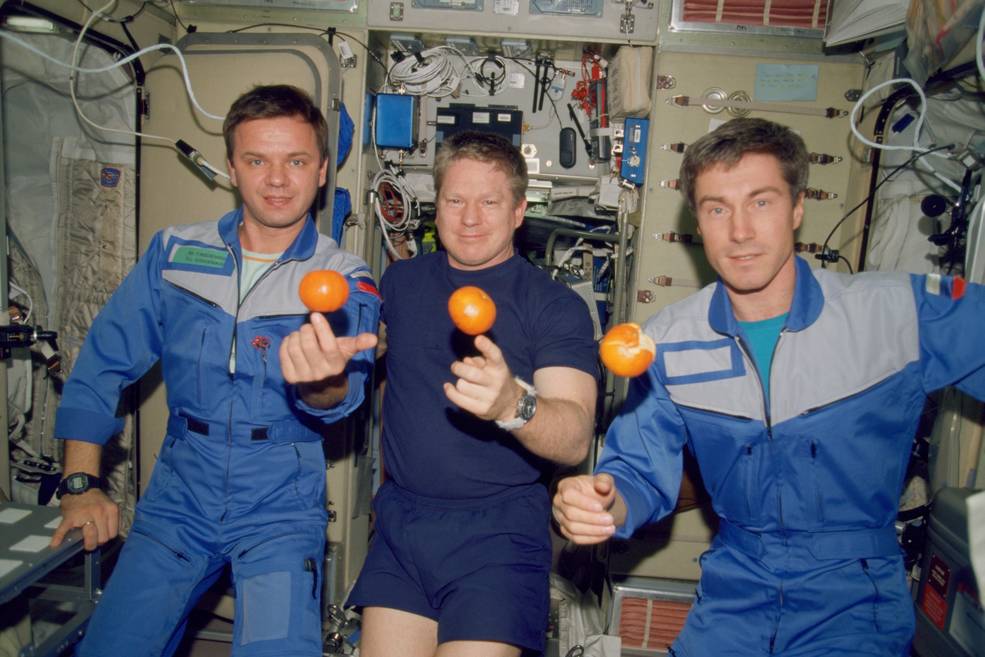
Left: ISS Expedition 1 crew (top to bottom) Krikalev, Shepherd, and Gidzenko at the foot of the Soyuz
rocket before liftoff. Right: ISS Expedition 1 crew (left to right) Gidzenko, Shepherd, and Krikalev inside
the Zvezda Service Module.
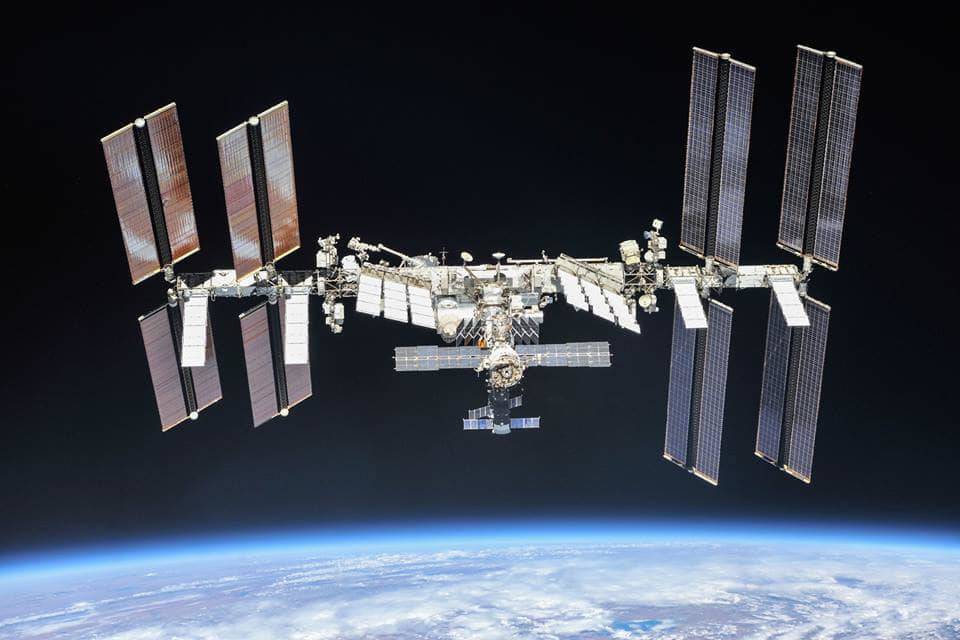
The International Space Station as it appeared in 2018.




























